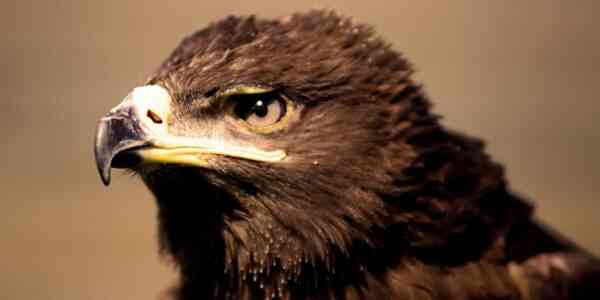The proud bird called the steppe eagle is somewhat similar to its close relatives of other species. This celestial predator has amazingly sharp eyesight, which allows it to see even the smallest prey from a great distance. When diving on a prey, the steppe eagle develops tremendous speed, and if it does not miss, the prey simply has no chance of escaping. And other birds treat him with fearful respect, preferring not to cross his path once again.
Interesting facts about the Steppe Eagle
- The wingspan of these impressive birds often exceeds two meters.
- Unlike many other living creatures, steppe eagle males are always smaller than females.
- An adult steppe eagle can weigh almost 5 kg. Males usually weigh less, in the range of 3-3.5 kg.
- In India, there is a stone eagle, so similar to the steppe eagle that even scientists for a long time did not suspect that these were two different species (interesting facts about eagles).
- Usually, Steppe Eagles nest somewhere higher, in rock crevices or in trees, but sometimes they nest right on the ground.
- Their chicks learn to fly independently after two months after birth.
- Unfortunately, the Steppe Eagle population is slowly but surely declining year by year.
- They constantly live mainly in Russia and China, but usually move to warmer regions for wintering, reaching Africa. During such migrations, the Steppe Eagles cover great distances, but then always return to their nests unerringly (interesting facts about migratory birds).
- The female Steppe Eagle never lays more than three eggs at a time. Usually only one or two.
- These aerial predators eat very diversely. They eat both small animals and insects, and they also do not disdain carrion on occasion.
- Almost all steppe eagles have a spot of red feathers on the back of their heads.
- All old individuals differ more dark plumage than the young. Steppe eagles begin to darken on average when they reach 4 years of age.
- These birds see their prey at a distance of up to 2 km, if the weather conditions are favorable.
- There are five times more sensitive cells in the eyes of the steppe eagle than in humans (interesting facts about vision).
- These amazing creatures are monogamous. Having found a mate, they usually stay together for the rest of their lives.
- The life span of the Steppe Eagle can reach 40-45 years.
- In Kazakhstan, these birds are listed in the local Red Book.
- Young Steppe Eagles are often electrocuted when landing on power lines.
- They have two centuries before their eyes. The first, transparent, protects sensitive eyes from dust and headwind, and the second, denser, closes when the bird sleeps.
- Steppe eagles gain height very naturally, spending a minimum of energy on it. They simply hover, allowing the currents of air to lift themselves higher and higher. Nature made their bodies so well adapted to flight that aircraft designers borrowed many of the features of eagle wings in the development of aircraft (interesting facts about aircraft).
- When diving on a victim, the steppe eagle is capable of accelerating up to 280-320 km/h.
- It requires almost no strength to maintain its flight altitude, so the Steppe Eagle can patiently soar in circles for hours, looking out for prey.
- An eagle’s nest can be over a meter in diameter.
- Incubation of eggs in steppe eagles is carried out exclusively by the female. The male at this time provides her with food.
- If this bird finds a desire to eat insects, it descends to the ground and collects them in much the same way as chickens do.
